As I’ve said before Breeding Season is a Season, overlapping the traditional seasons of summer and fall. If defining a Season influences how you live your life, Breeding Season definitely qualifies. It doesn’t take long before I’m ready for it to be over. It’s easier when all the ewes are in one place, the rams are somewhere else, and I don’t have to feed groups differently and watch my back when I’m with the ewes.
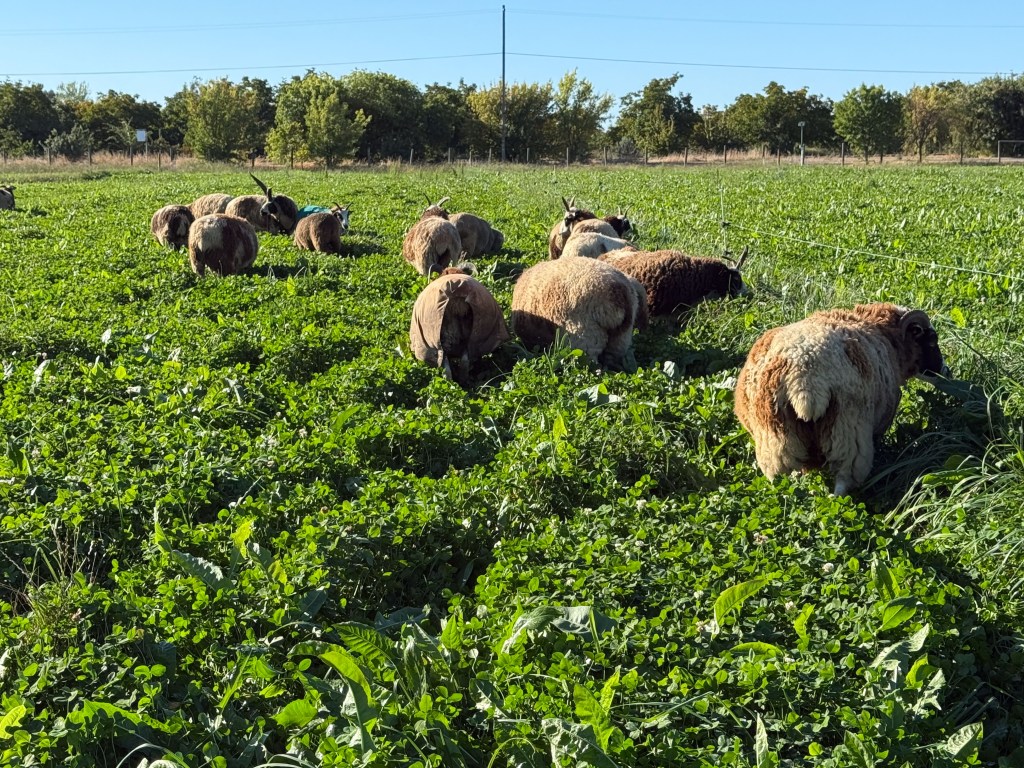
We have 4 breeding groups, a non-breeding group (the oldest sheep, Jade, and six ewe lambs), two young rams with potential for breeding (too young and/or small this year), and two older rams who are sold but still here. The breeding group with the most ewes is on the main pasture. Hornblower has about 30 ewes with him. Doesn’t that pasture look great?

Elvis has eleven ewes and is on the pasture to the north. When I moved the Hornblower group to the next paddock of the south pasture I needed to separate the two groups with more than a single net fence, especially since I’m having some issues with the power to the north one. So I set up two fences and was able to power the north one from the south one.

Those pasture photos were taken October 10. On the 13th it rained. We had 1.6″ the first day and .5″ the second day. A significant rainfall usually marks the end of grazing. It is late in the year and the pasture is depleted or dormant. Also, the land is flat and the water doesn’t drain well. This year is different because the pasture has been renovated and there is a much better stand (mostly clover, trefoil, and chicory). We are not sure how long we’ll be able to graze but it seemed appropriate to continue as long as I moved the sheep to a fresh paddock.
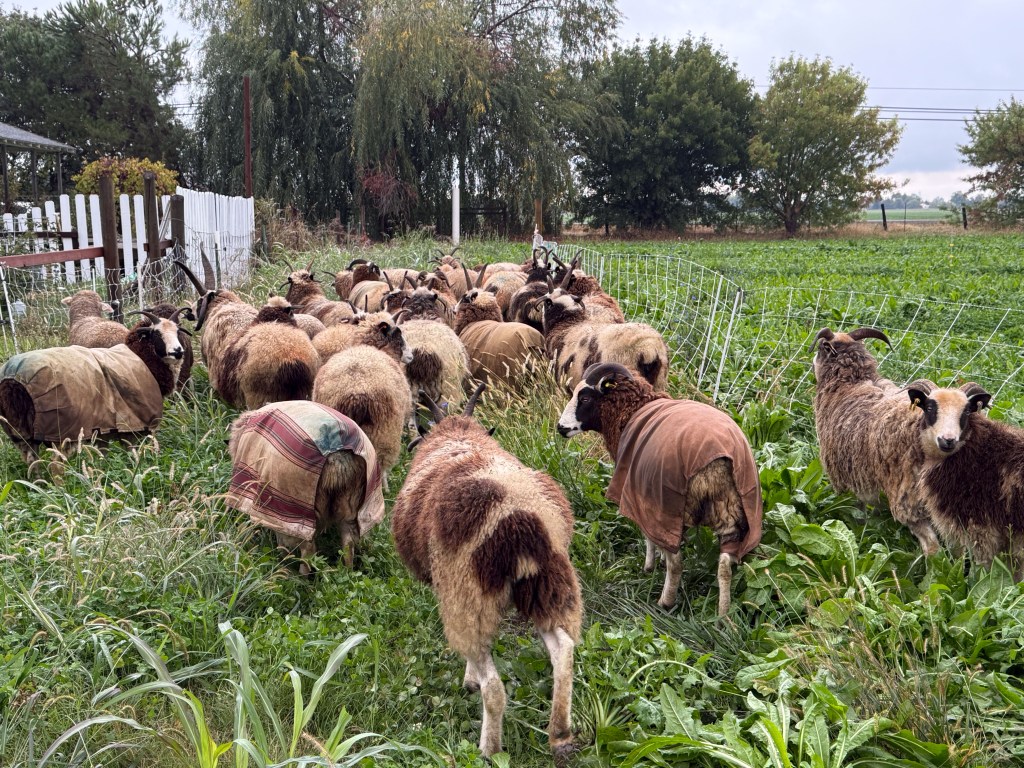
Five days ago I moved Hornblower’s group to the paddock closest to the road.
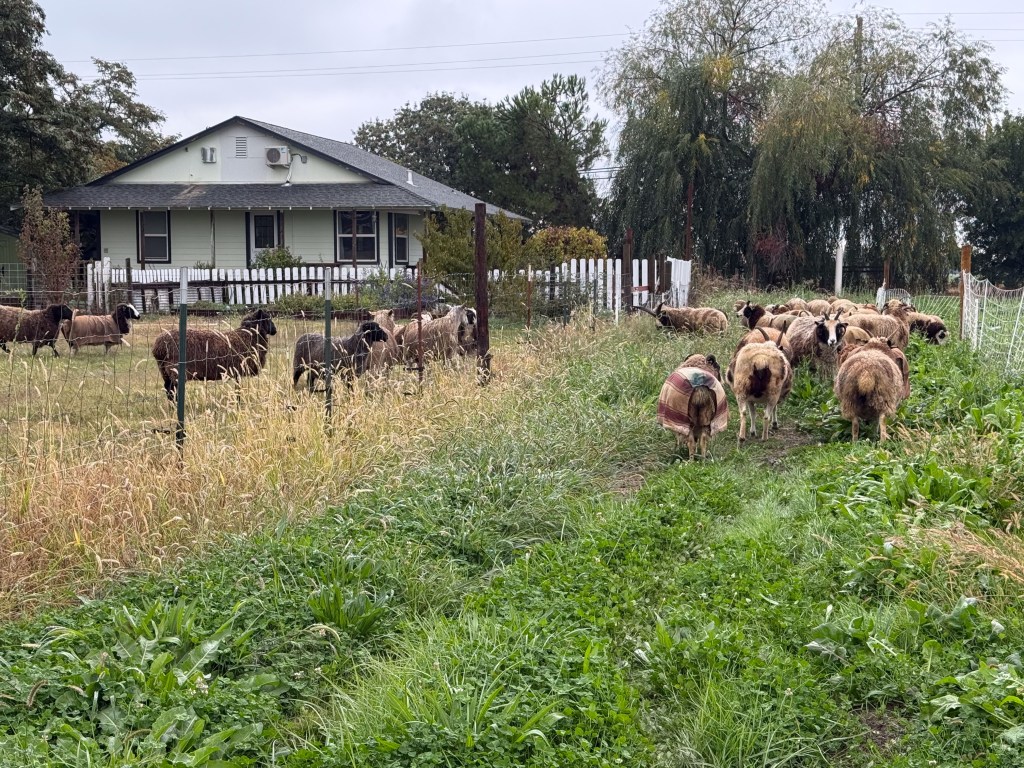
The lane is adjacent to Clancy’s group. However there is hot wire on both sides of the net fence and there doesn’t seem to be any problem with either ram trying to get through.
You may notice some blue marks on the ewes. Those are more noticeable than the orange marks on several, The rams wear marking harnesses so we have a better idea of when to expect lambs. I hadn’t noticed as many marks lately.

Is this why? The rams went in with ewes three weeks ago on September 27. I substituted the orange markers from Clancy and Hornblower with blue markers a week ago. You can see the difference in a new one and the used ones.
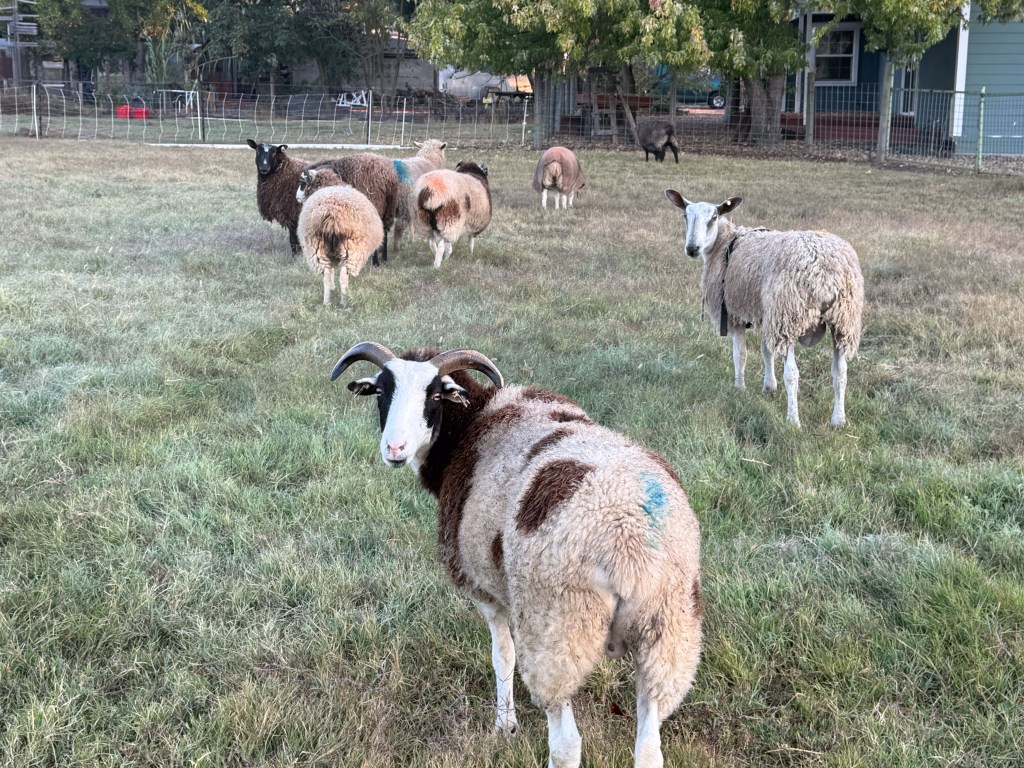
Clancy’s group is in the field between the barn and the shop–not one of the renovated pastures. Notice two blue marks. The ewe in the background marked blue was the first one Clancy marked with orange on September 27.
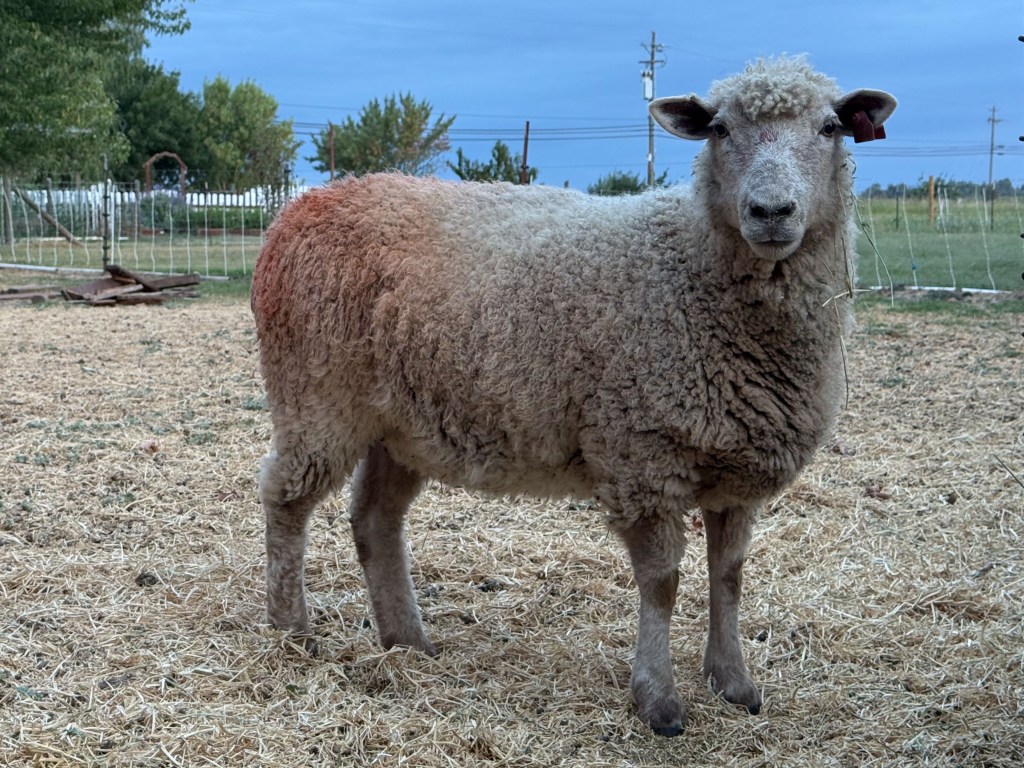
So we now know that she was not pregnant after that breeding. If all the ewes in this group are re-marked that would indicate a problem with the ram. Hopefully that is not the case. The other ewe marked blue in the photo above this one had not been marked before. I’ll keep watching to make sure that more of the oranges aren’t also marked blue in the next week.
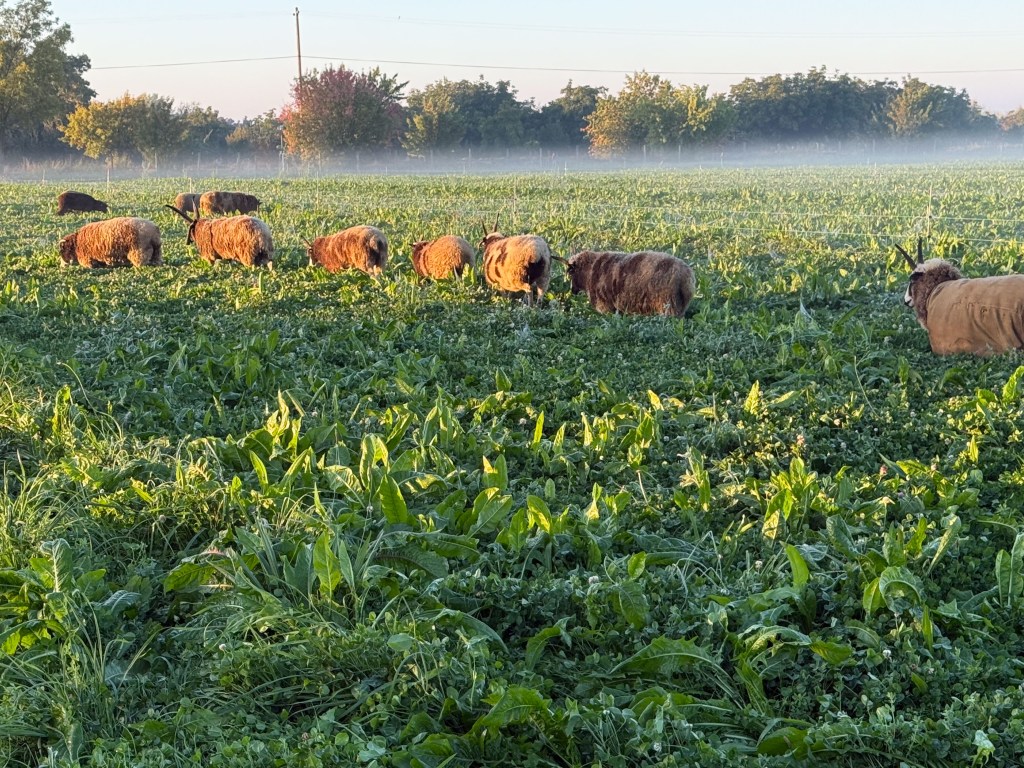
This morning’s move to fresh pasture.

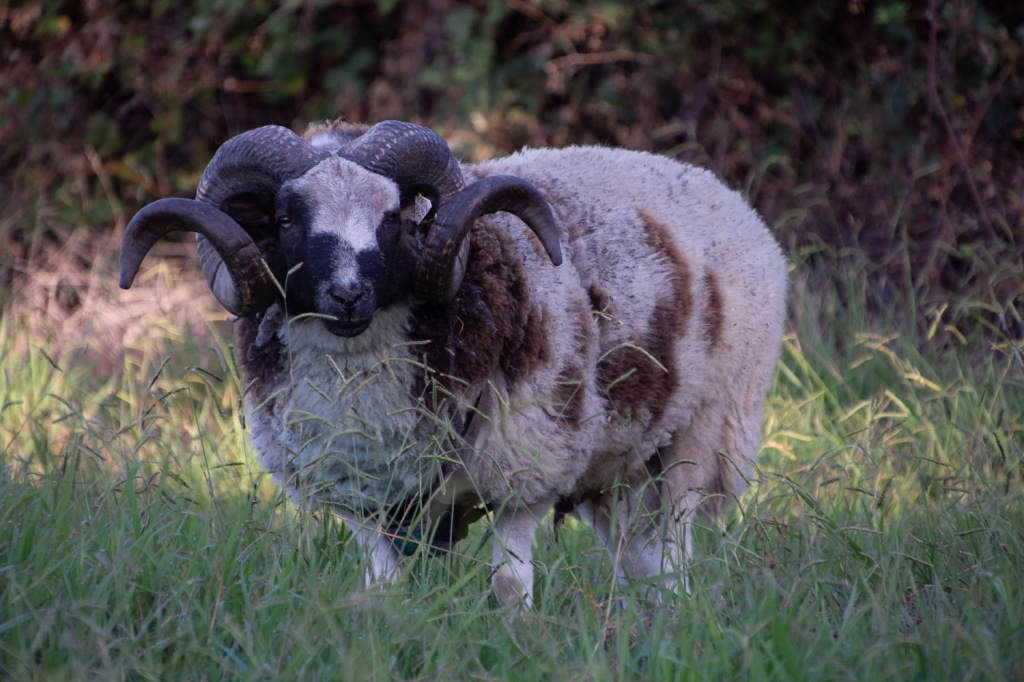
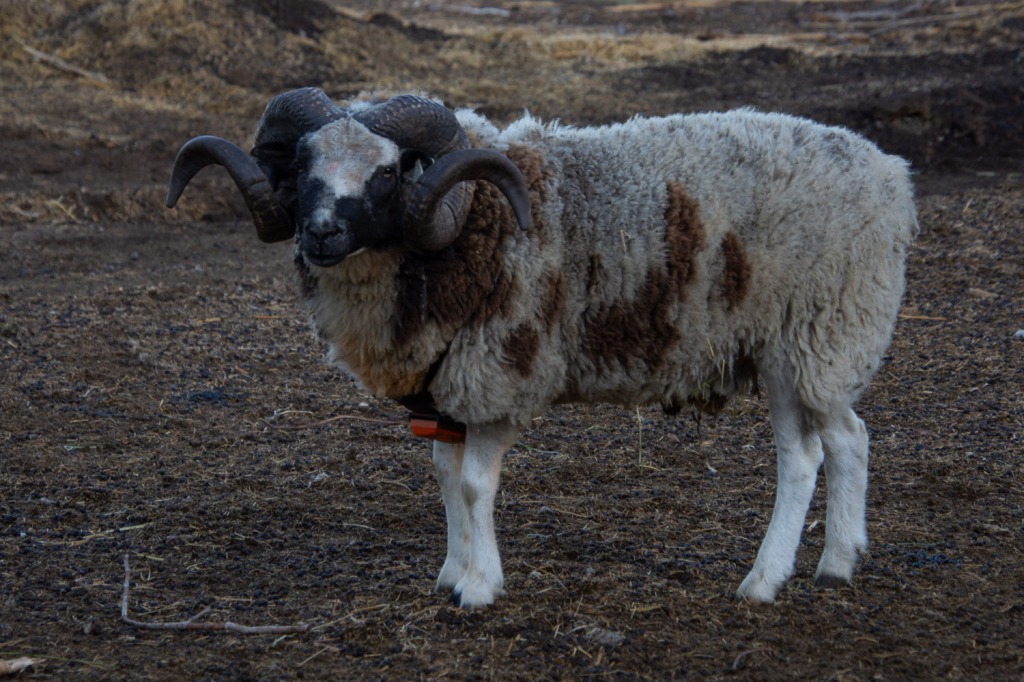
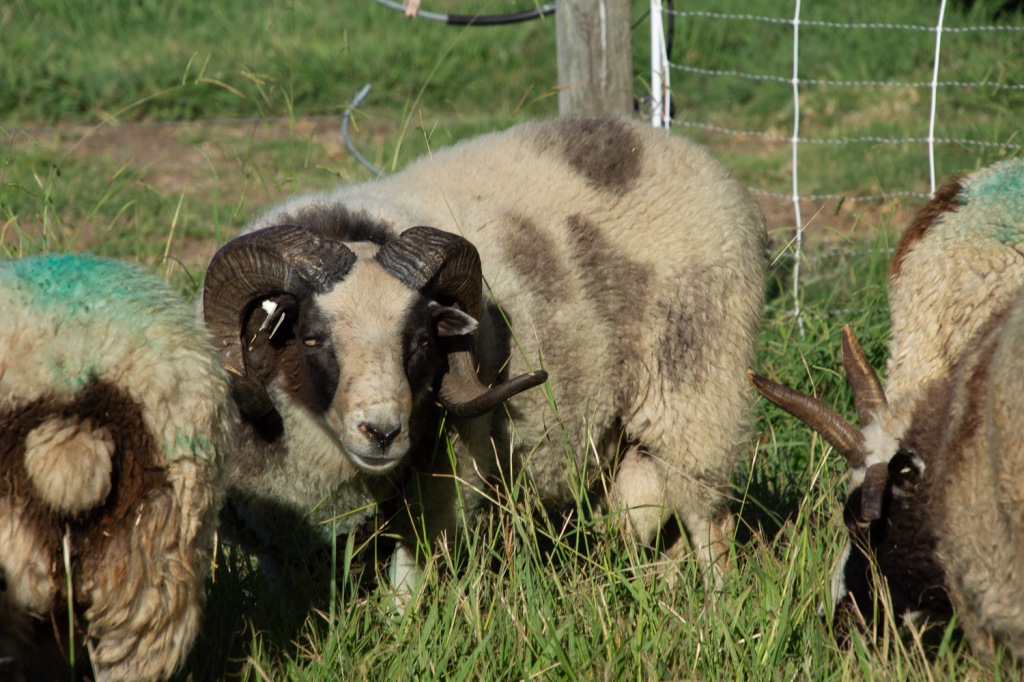
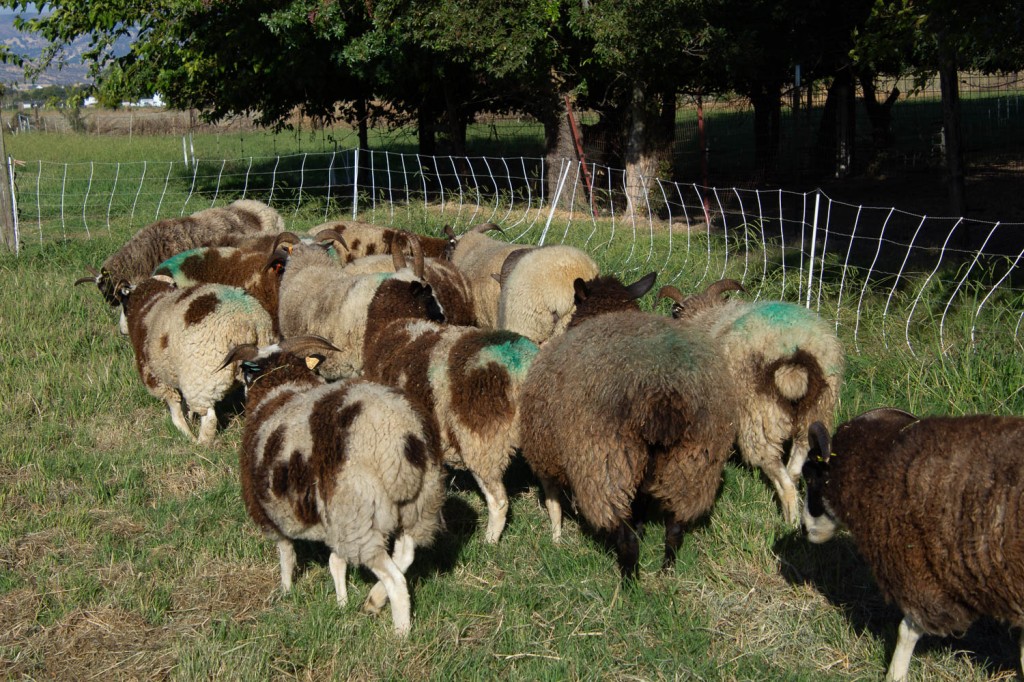
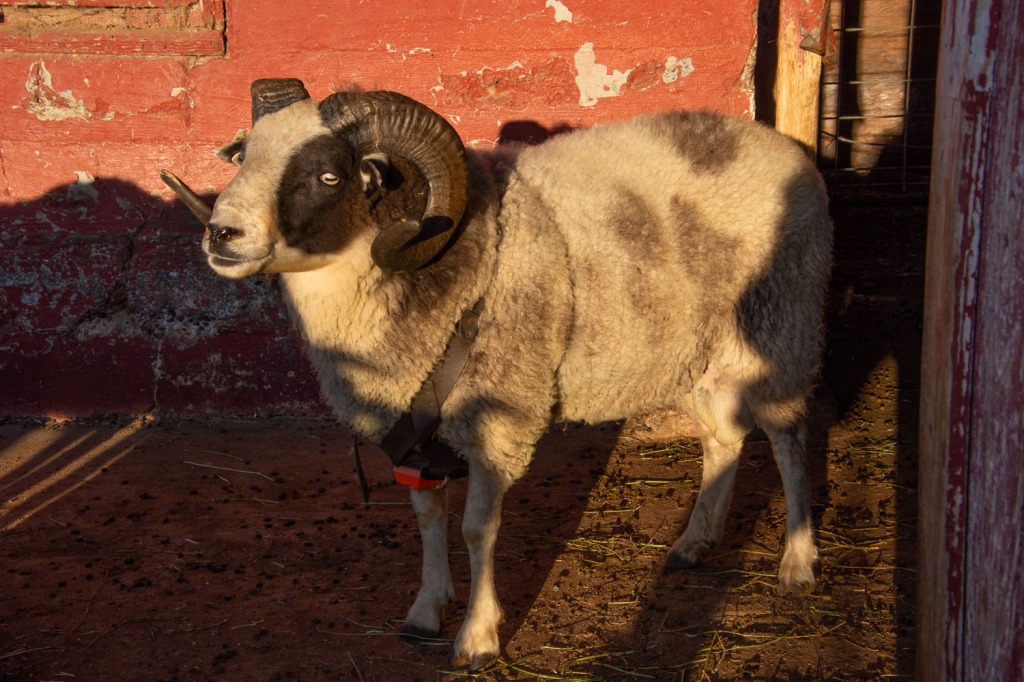
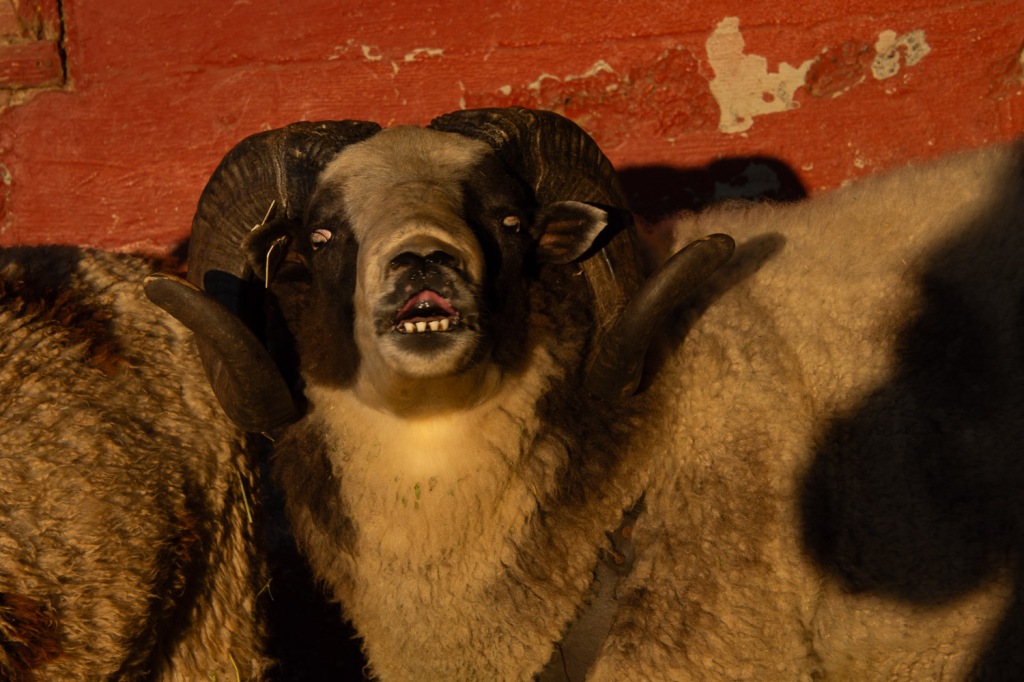
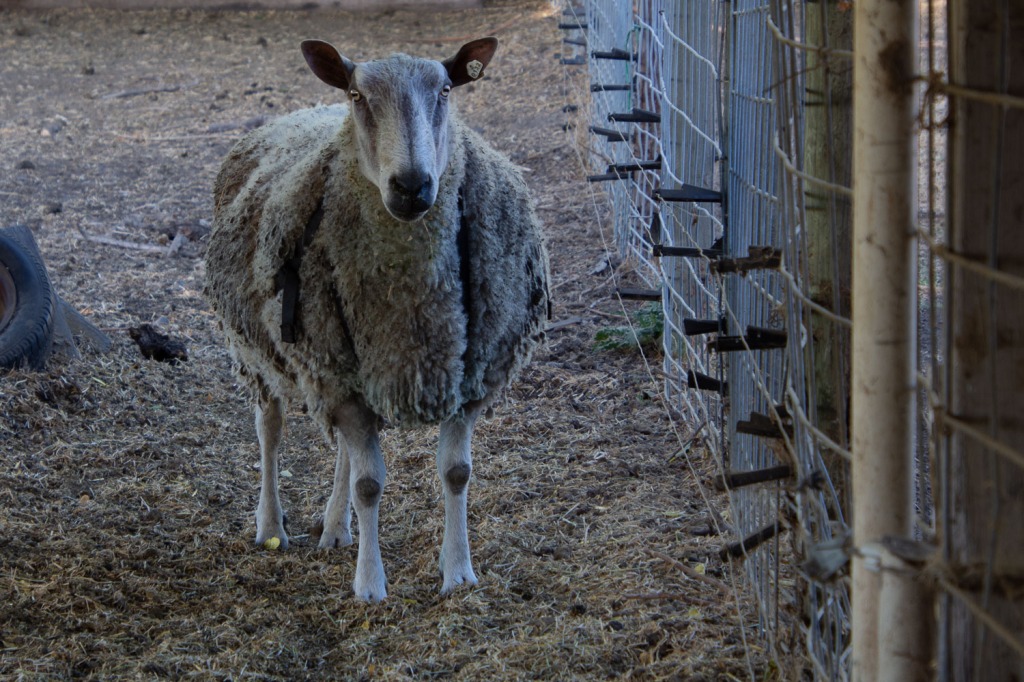


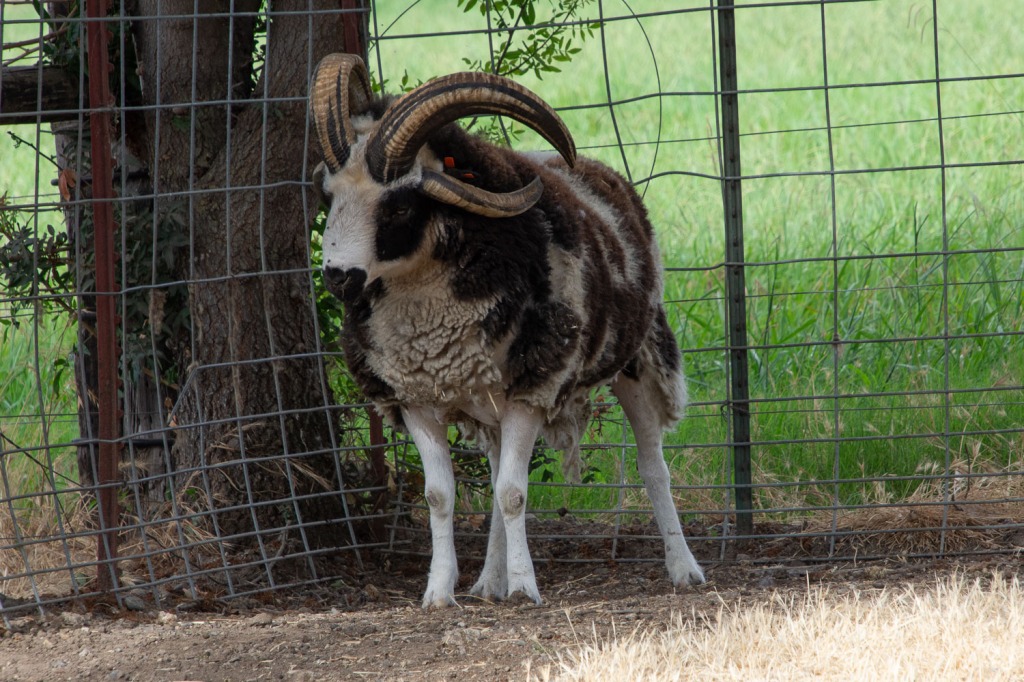
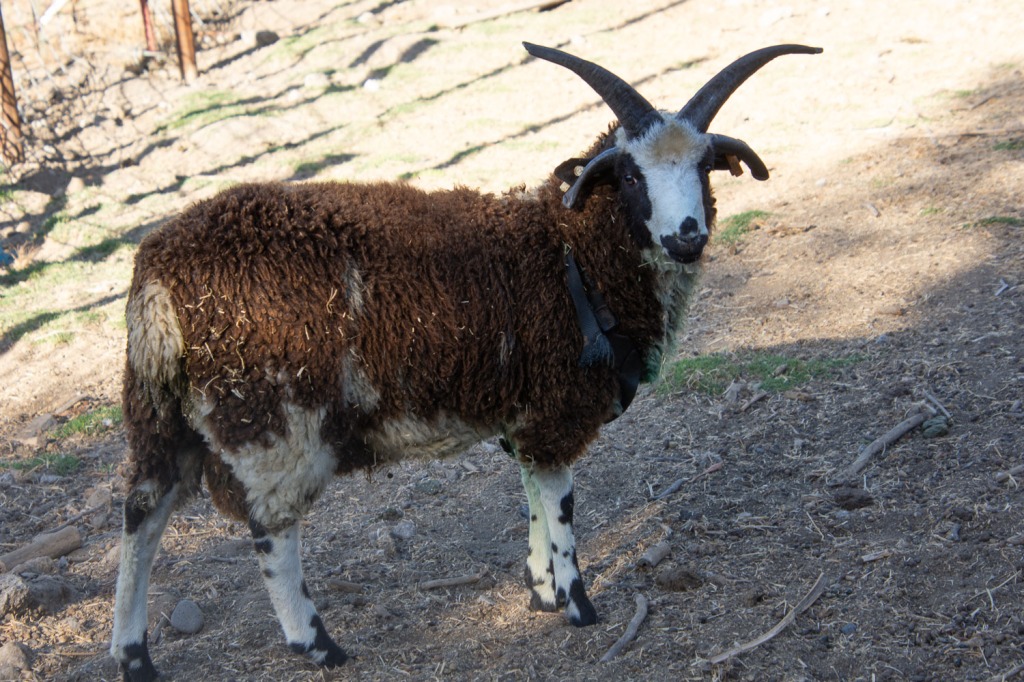
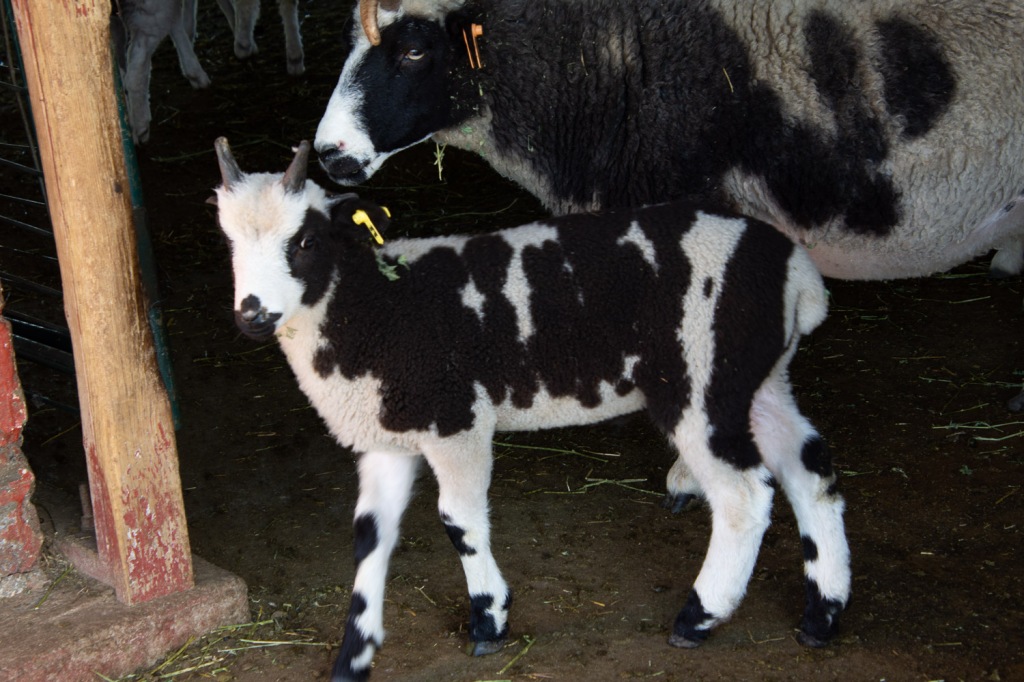
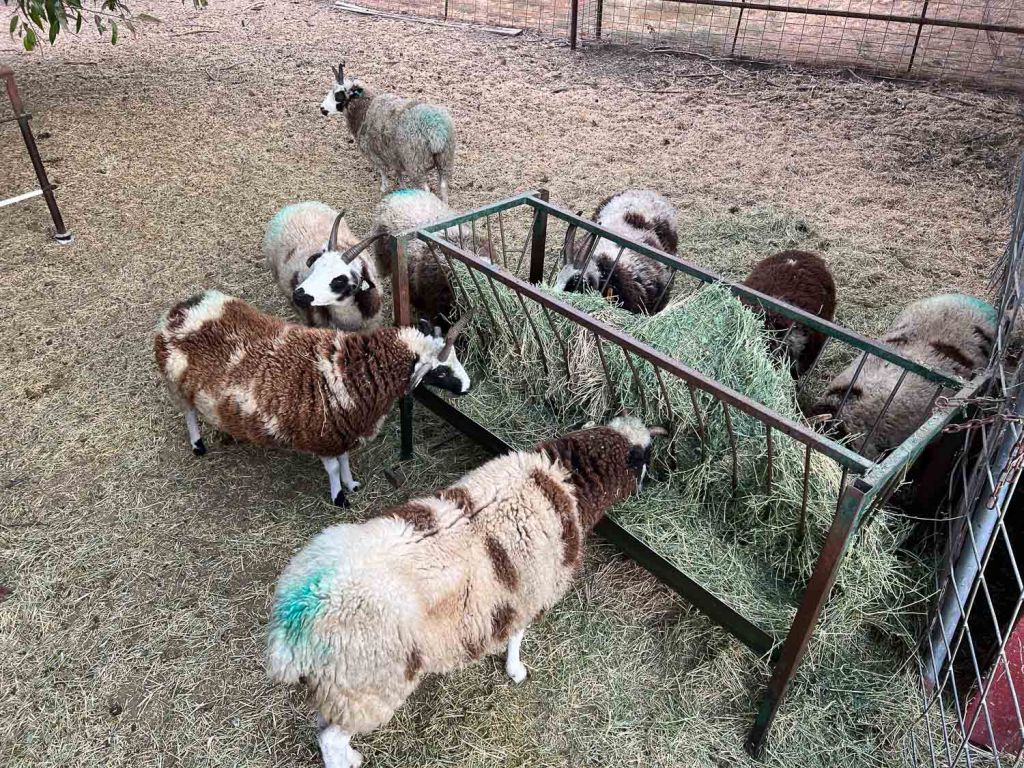
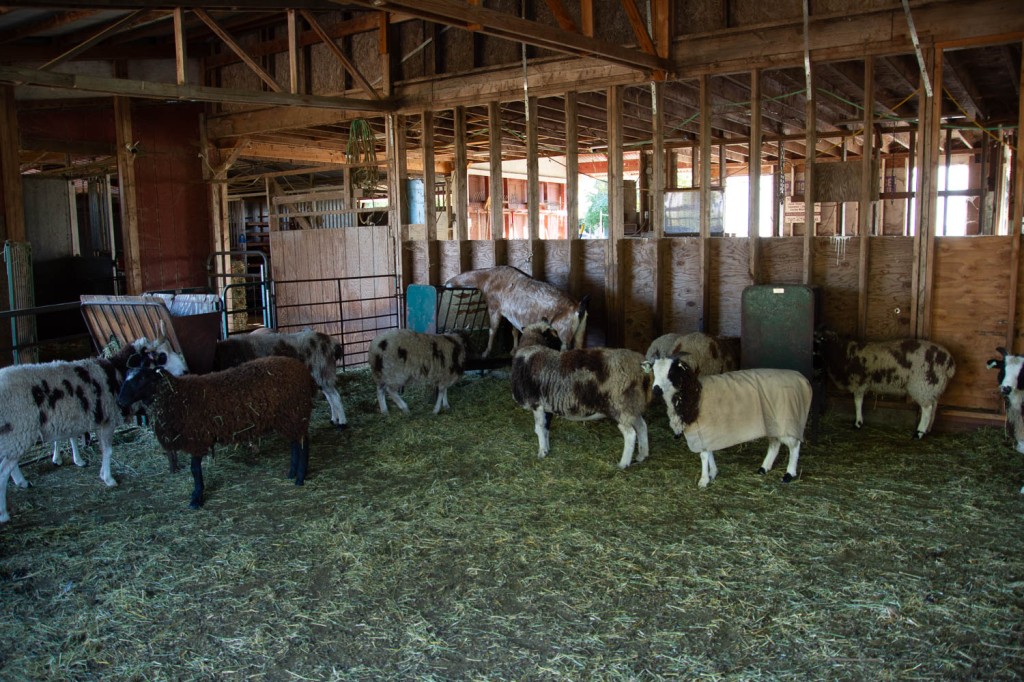
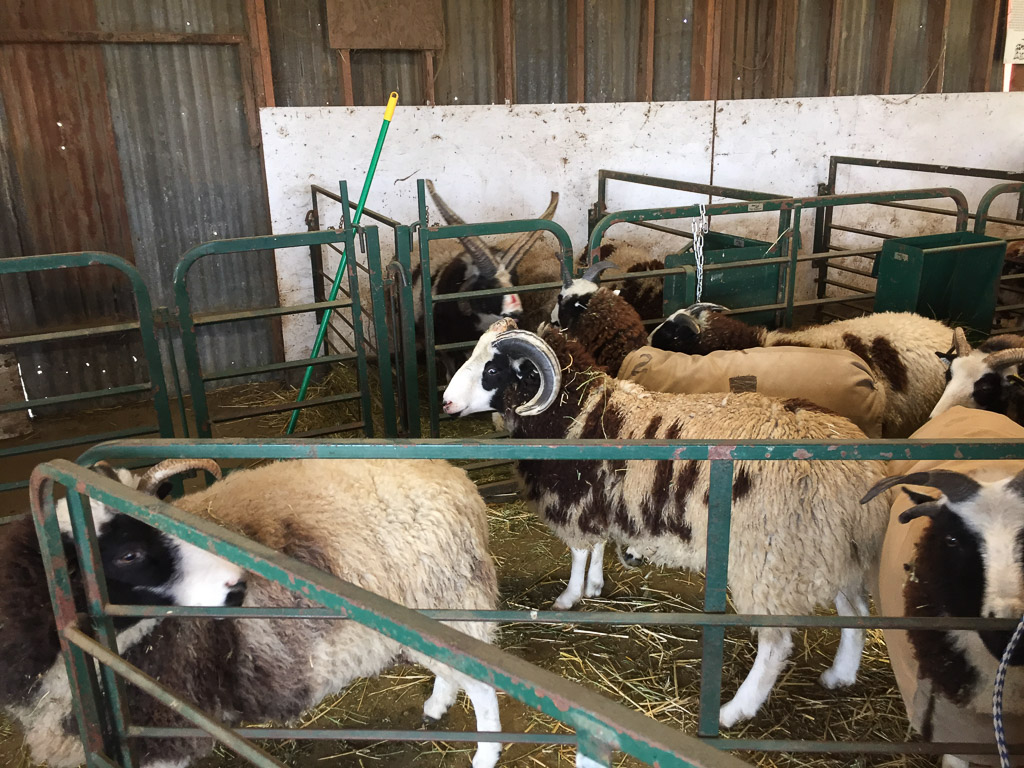 I brought the groups in one at a time and separated the rams. That’s Buster in the pen. His nose is already bloody because he was ramming the panel to try to get to Axle, the young 2-horn ram in the middle of the photo.
I brought the groups in one at a time and separated the rams. That’s Buster in the pen. His nose is already bloody because he was ramming the panel to try to get to Axle, the young 2-horn ram in the middle of the photo. Most of the ewe flock was back together now and that was Clark’s lucky day! That’s him in the background with his head turned away.
Most of the ewe flock was back together now and that was Clark’s lucky day! That’s him in the background with his head turned away.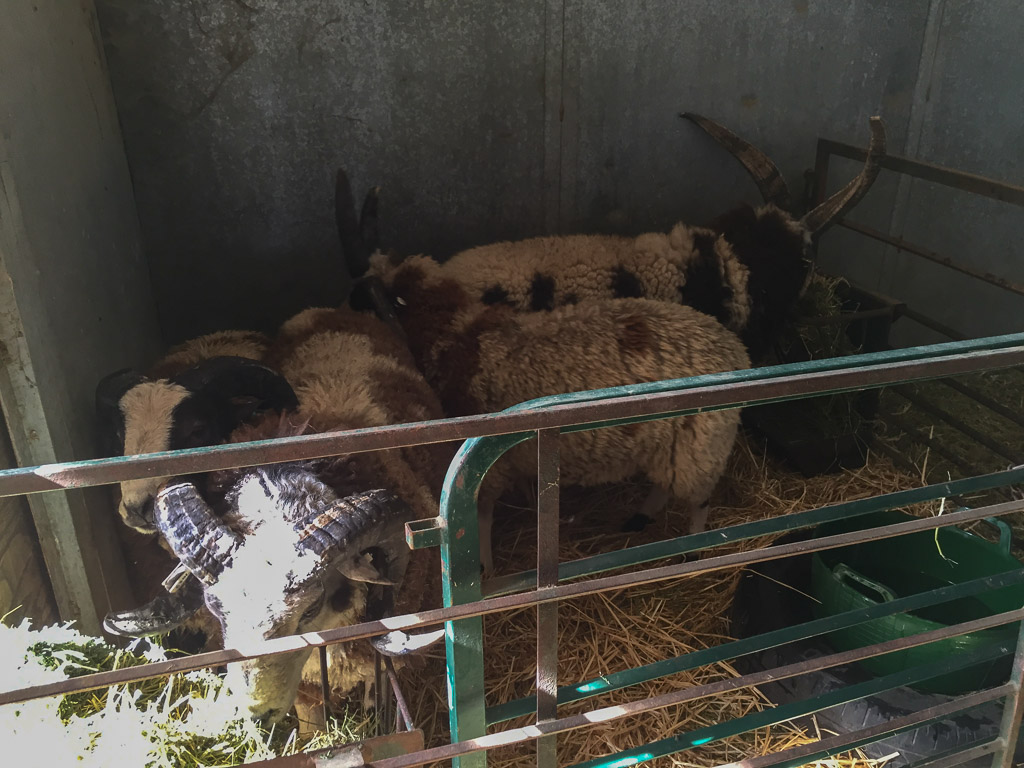 Meanwhile the other four rams went into their “buddy-up” pen. The point of this is that they are confined enough that they can’t do much damage. That doesn’t mean that they don’t hit each other but at least they can’t back up 10 feet and come charging.
Meanwhile the other four rams went into their “buddy-up” pen. The point of this is that they are confined enough that they can’t do much damage. That doesn’t mean that they don’t hit each other but at least they can’t back up 10 feet and come charging.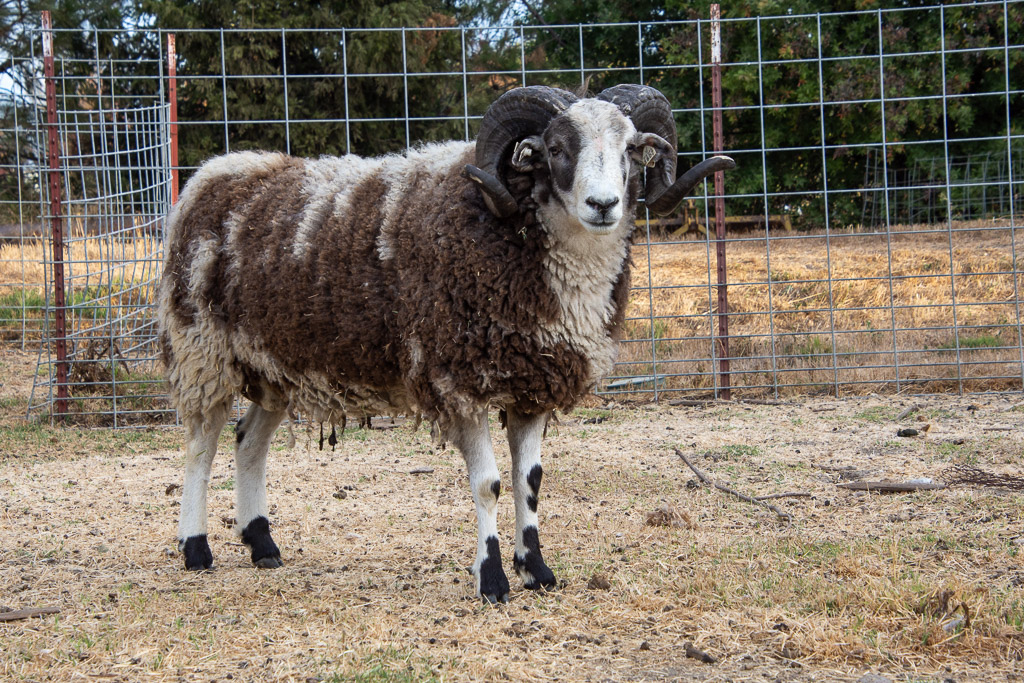 After a few days of learning to be buddies again they went back to the ram pen with minimal fuss. They all had figured out the pecking order. Cayenne (above) is #2.
After a few days of learning to be buddies again they went back to the ram pen with minimal fuss. They all had figured out the pecking order. Cayenne (above) is #2.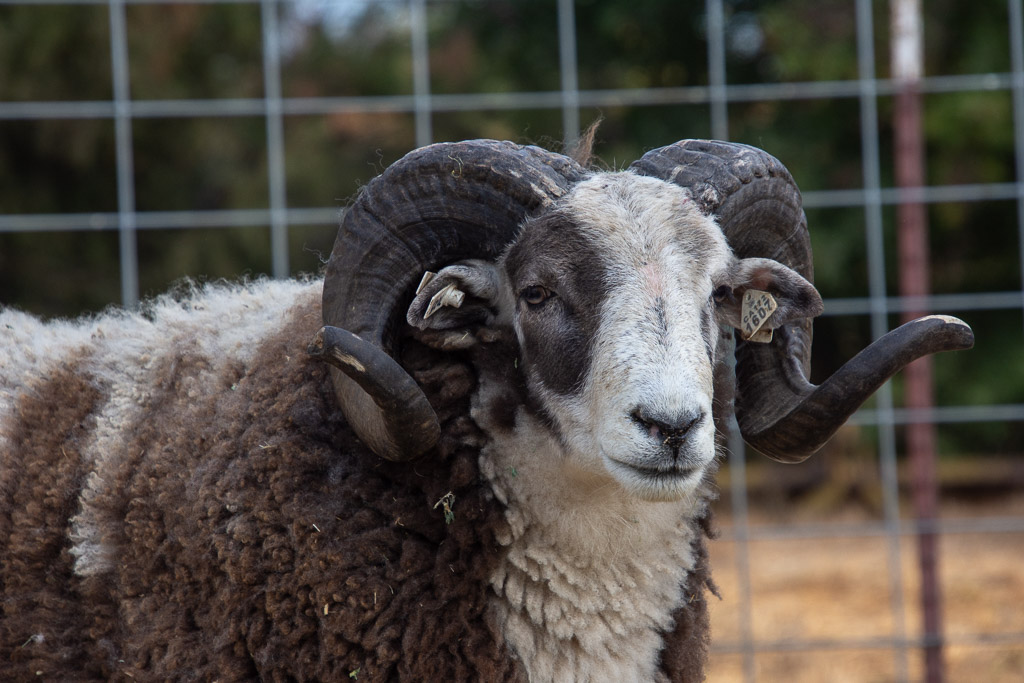 Cayenne. I love a nice two horn head.
Cayenne. I love a nice two horn head.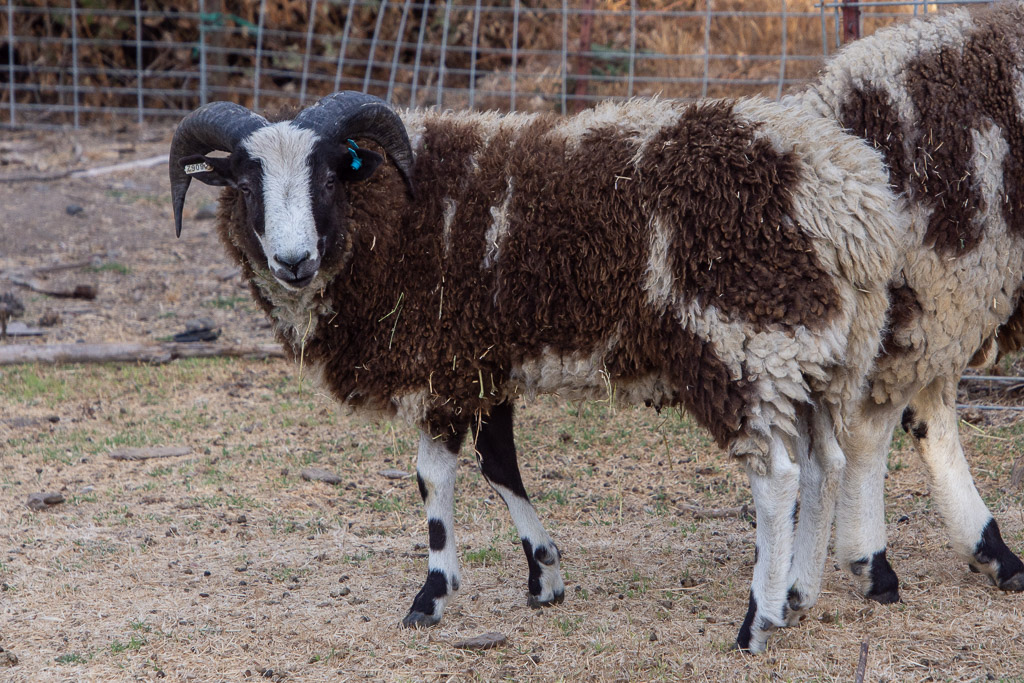 This is Spark, Cayenne’s full brother, born this year. There is the difference a year makes. Cayenne was born last year.
This is Spark, Cayenne’s full brother, born this year. There is the difference a year makes. Cayenne was born last year.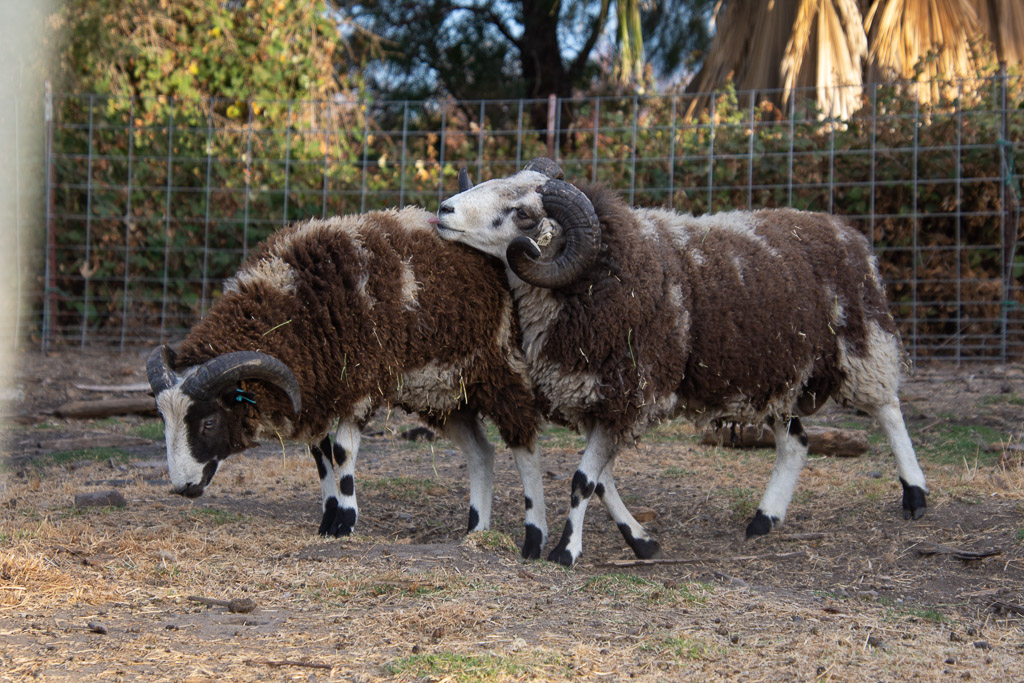 Brothers.
Brothers.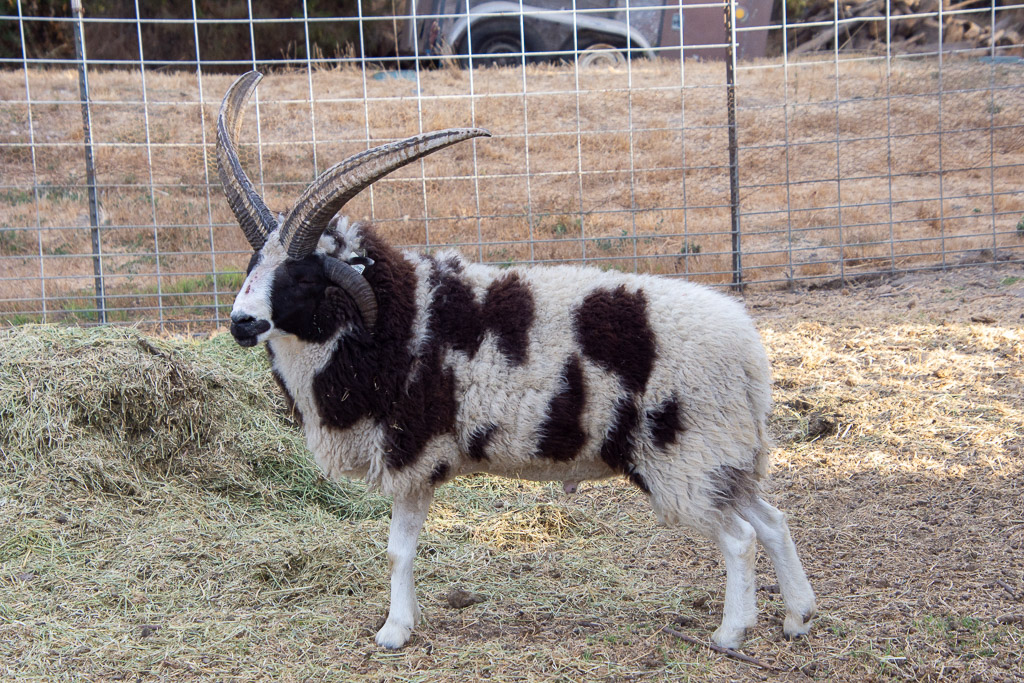 Bide a wee Buster is #1 in the ram pen.
Bide a wee Buster is #1 in the ram pen.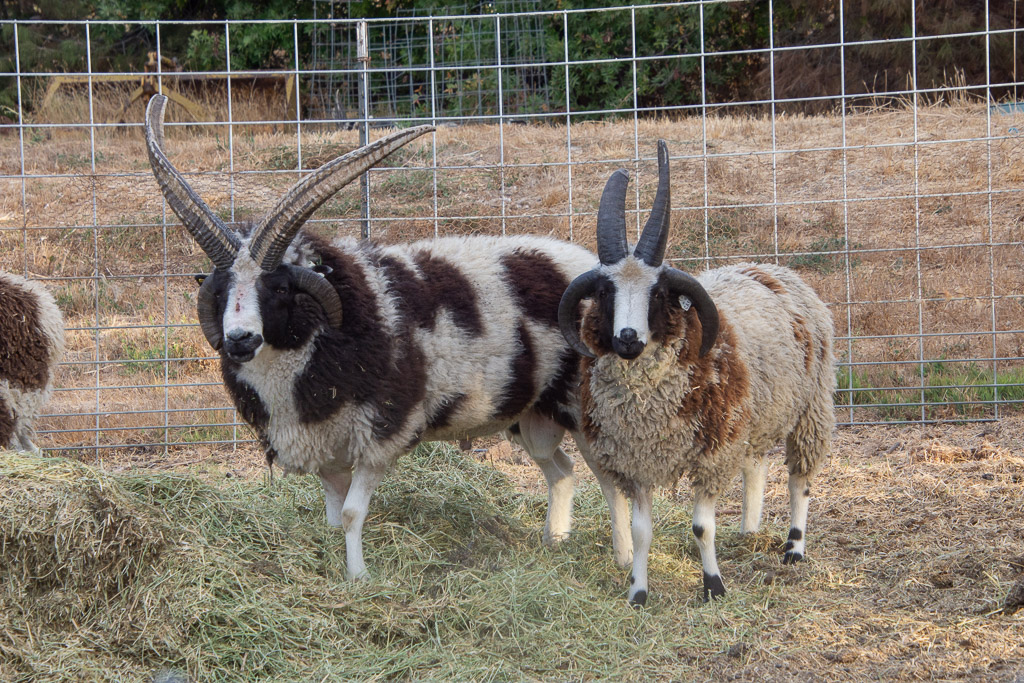 Buster is 3 years old and Clark is his son from this year.
Buster is 3 years old and Clark is his son from this year. 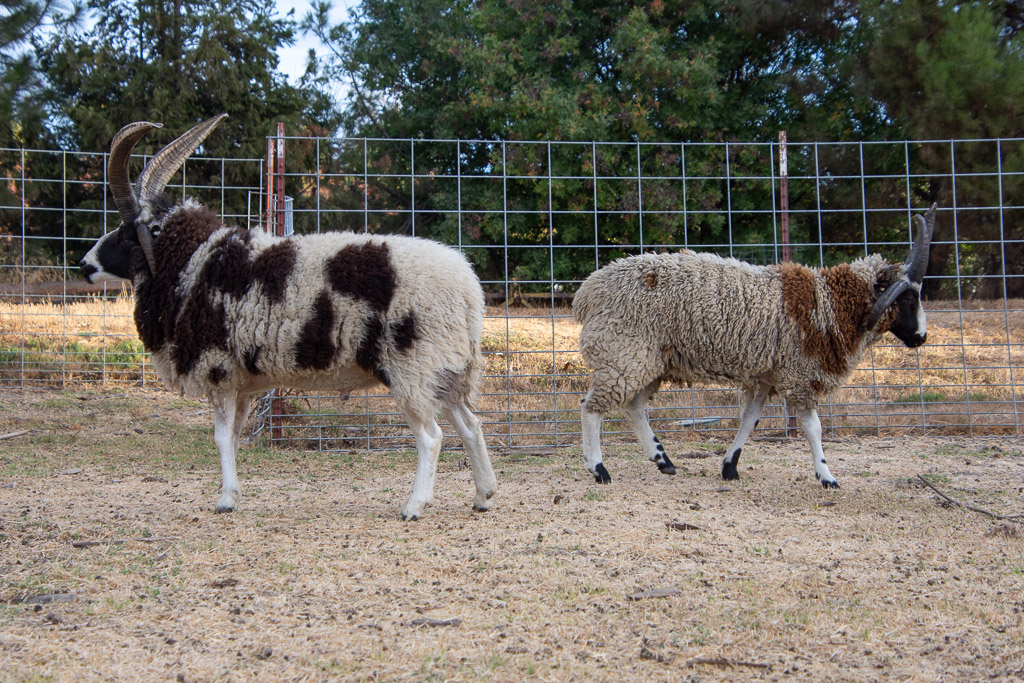 Bookends?
Bookends?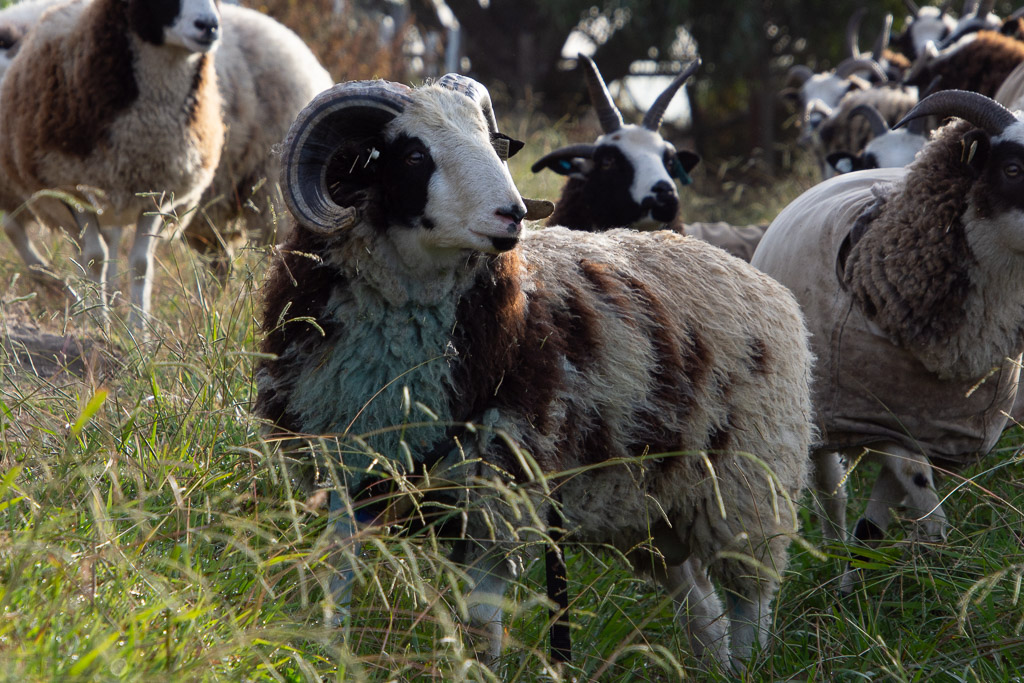 Here’s the lucky ram who gets to stay out with the ewes for another few weeks. This is Axle, also a 2018 ram. He is wearing a blue marker…
Here’s the lucky ram who gets to stay out with the ewes for another few weeks. This is Axle, also a 2018 ram. He is wearing a blue marker…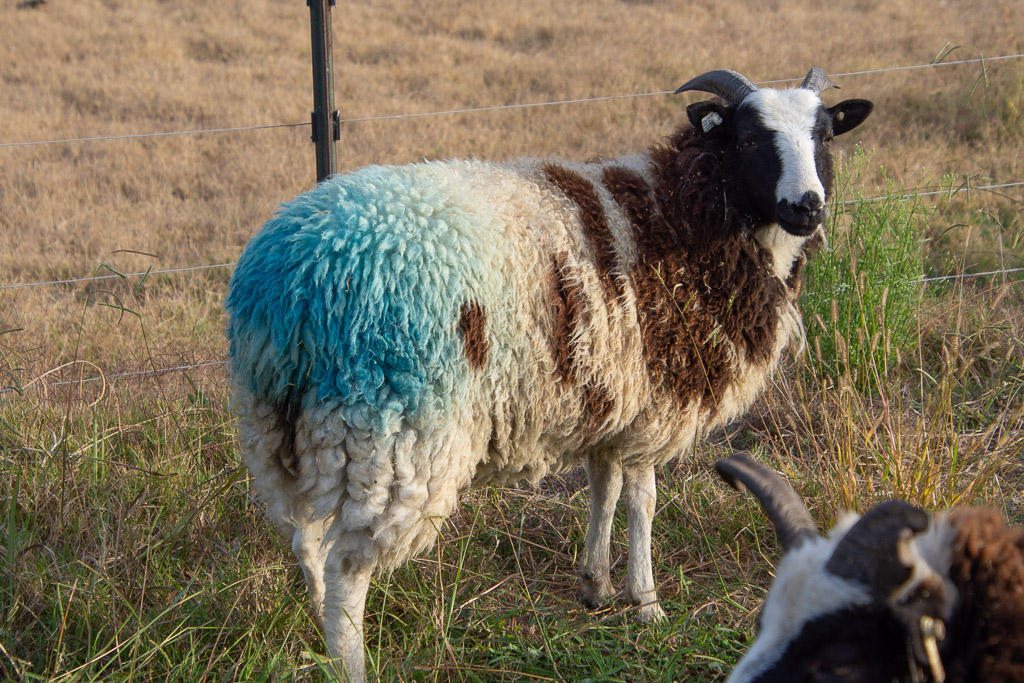 …and I finally saw some real color. This is ewe lamb, Soprano.
…and I finally saw some real color. This is ewe lamb, Soprano.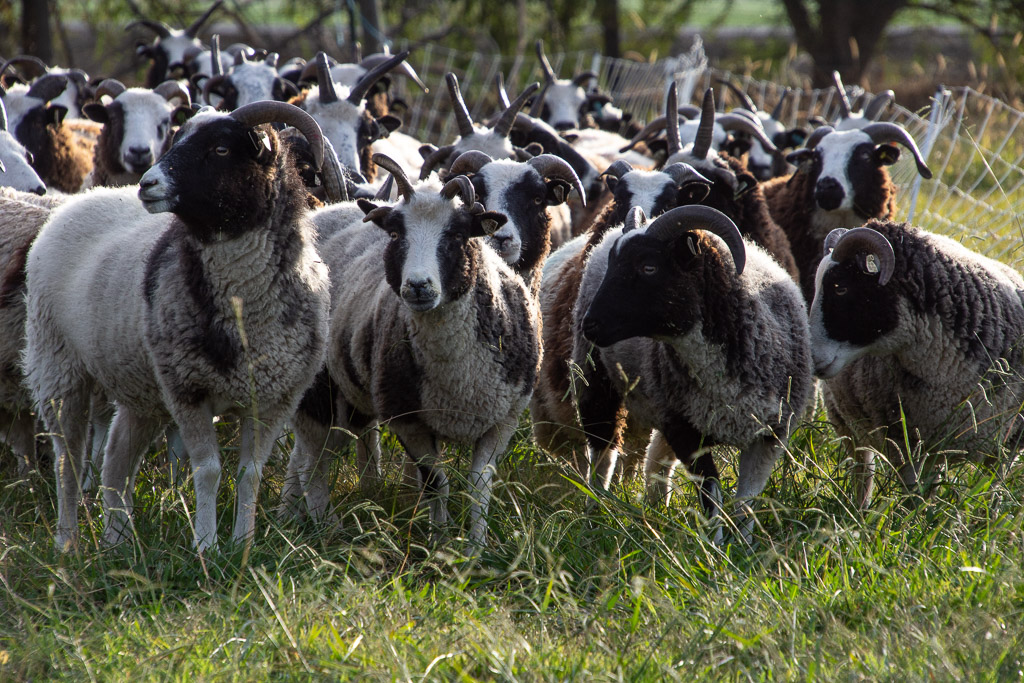 Today I moved most of Peyton’s ewes back to the flock. Three of them were the Pope Valley sheep that came this summer, and they immediately found their two friends. That’s the five or them in the front. Large Triangle, 4-Horn, Small Triangle, White Ear, and Crooked Blaze in the back. (They do have names but I remember them better by what I called them at first.)
Today I moved most of Peyton’s ewes back to the flock. Three of them were the Pope Valley sheep that came this summer, and they immediately found their two friends. That’s the five or them in the front. Large Triangle, 4-Horn, Small Triangle, White Ear, and Crooked Blaze in the back. (They do have names but I remember them better by what I called them at first.) This is part of Peyton’s group. He got 11 ewes.
This is part of Peyton’s group. He got 11 ewes.  Peyton is a BFL and these will be crossbred lambs.
Peyton is a BFL and these will be crossbred lambs.



 Next was Buster. He was given 16 ewes.
Next was Buster. He was given 16 ewes. All the rams had yellow markers.
All the rams had yellow markers.


 Clark is next. He is Buster’s son from this year. It’s hard to pick him out in this photos because the ewes are all bigger than he is.
Clark is next. He is Buster’s son from this year. It’s hard to pick him out in this photos because the ewes are all bigger than he is. Clark was given 11 ewes.
Clark was given 11 ewes. Last we have Cayenne with 10 ewes.
Last we have Cayenne with 10 ewes. 

 Last, there is the group of ewe lambs that I chose not to breed this year.
Last, there is the group of ewe lambs that I chose not to breed this year.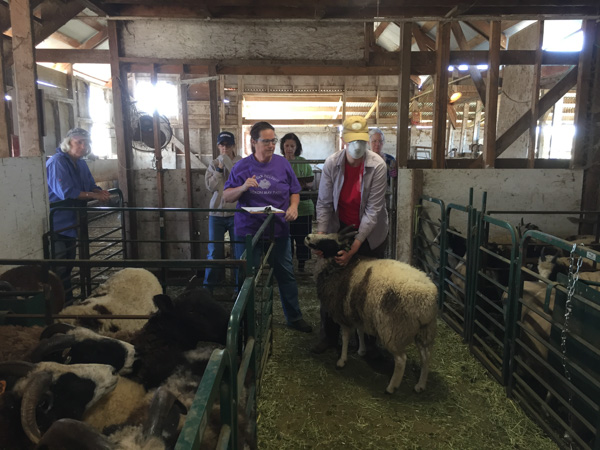
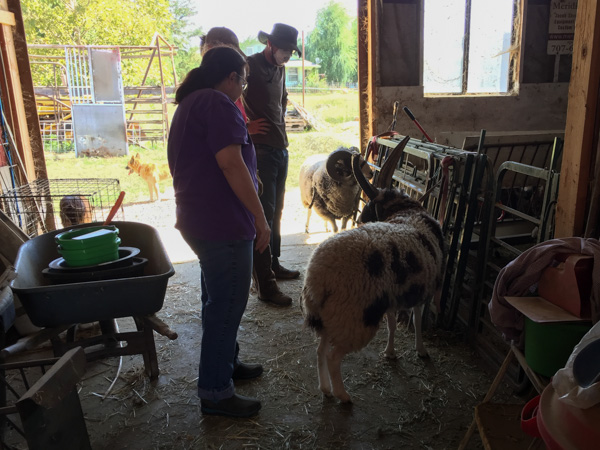
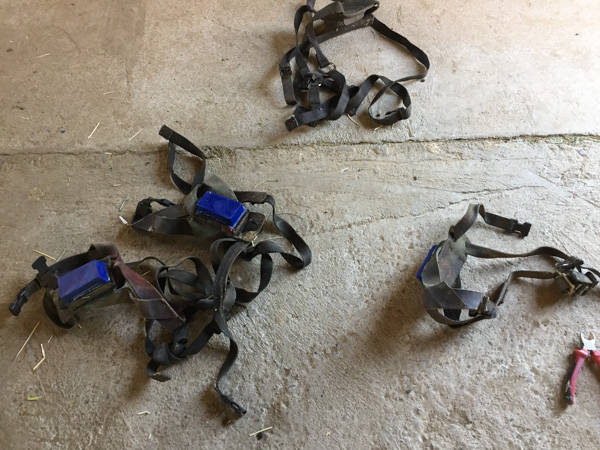
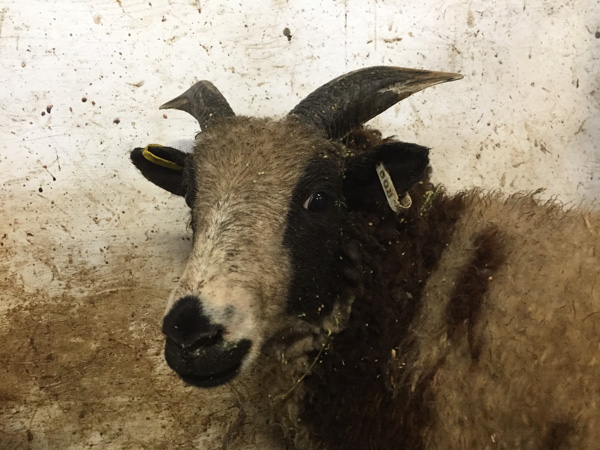
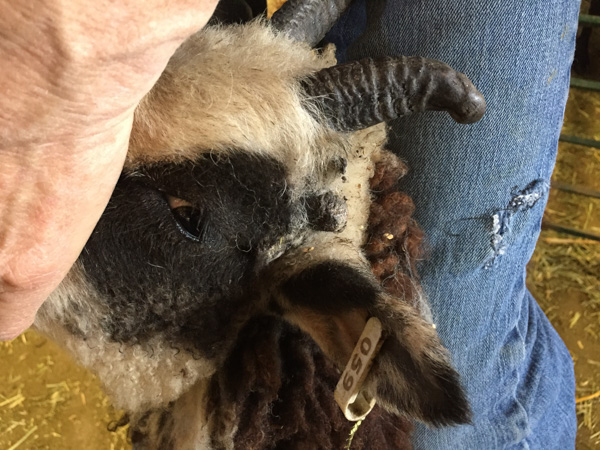
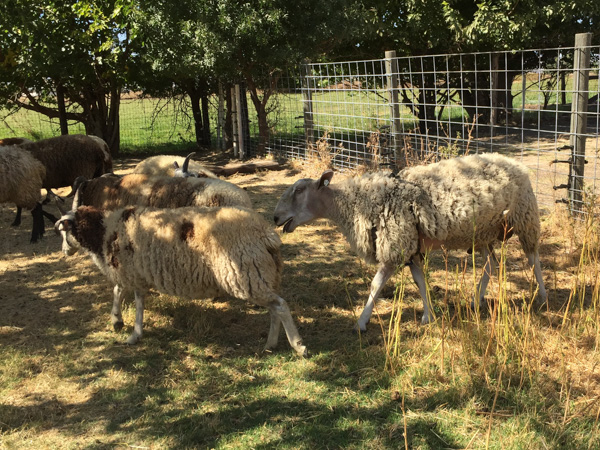

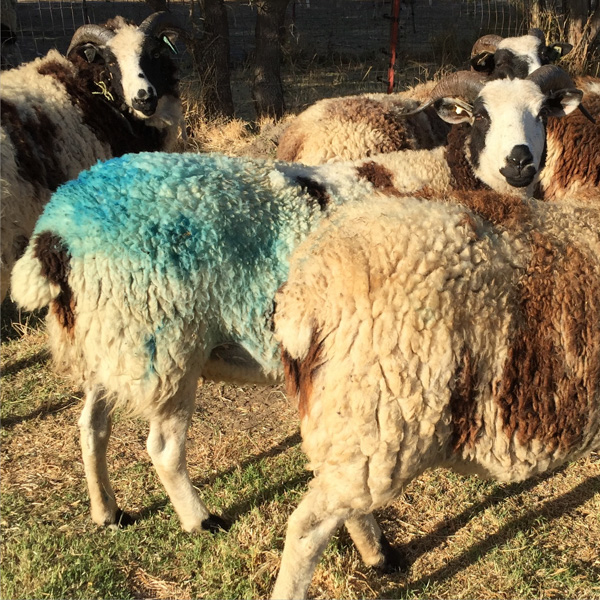

















 Starthist Dragon is on loan from a friend. When I evaluated his lamb fleece a couple of years ago I was impressed and Trish remembered that so offered him for the season.
Starthist Dragon is on loan from a friend. When I evaluated his lamb fleece a couple of years ago I was impressed and Trish remembered that so offered him for the season. Bide a wee Buster came here from Oregon last June. He was so small I had my doubts about him being up for the task this month, but I should have had faith.
Bide a wee Buster came here from Oregon last June. He was so small I had my doubts about him being up for the task this month, but I should have had faith.
 Faulker is ram #5. He is a Bluefaced Leicester (BFL) and sires the black (brown) lambs. He is the big guy in the center of the photos. His lambs are larger than the 100% Jacob lambs and are mostly sold for meat although they have very pretty fleeces and also wind up in some spinners’ flocks.
Faulker is ram #5. He is a Bluefaced Leicester (BFL) and sires the black (brown) lambs. He is the big guy in the center of the photos. His lambs are larger than the 100% Jacob lambs and are mostly sold for meat although they have very pretty fleeces and also wind up in some spinners’ flocks. Faulkner enjoying some time with the ladies.
Faulkner enjoying some time with the ladies. Isabelle, marked by Joker.
Isabelle, marked by Joker. Skye is in Catalyst’s group.
Skye is in Catalyst’s group. Jillian is with Faulkner.
Jillian is with Faulkner. Joker looks a little disheveled after a few days.
Joker looks a little disheveled after a few days. Buster has his work cut out for him to reach those big ewes…
Buster has his work cut out for him to reach those big ewes… …and needed a nap after the first morning out.
…and needed a nap after the first morning out.




